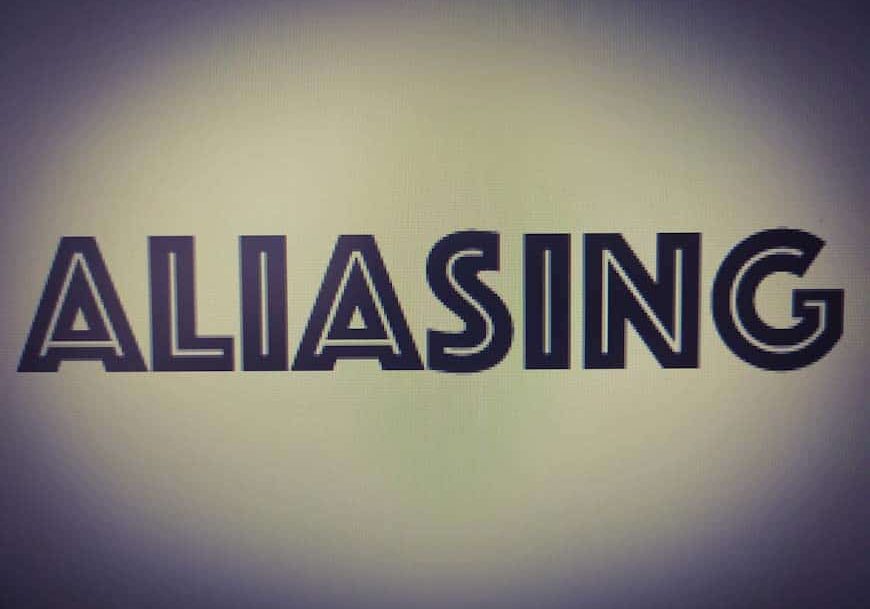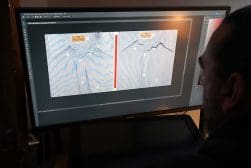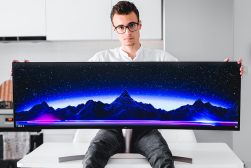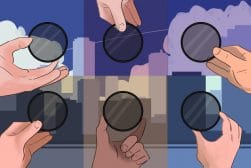
What is Anti Aliasing? (Examples & How to Fix it)
A simple explanation of anti-aliasing and how it can affect your photography. We'll also give some advice on aliasing and gaming, anti-aliasing filters and more.
Learn | Photography Guides | By Ana Mireles
Have you ever noticed any weird artifacts in your photos? Especially in the subject’s clothes or the roof of a building?
Then this is the article for you! Stick with me and you’ll learn what aliasing is and how to prevent it or fix it.
Aliasing is not something that only affects photographers. If you’re a gamer, you’ll find some valuable information too – head on to the last part of the article to understand aliasing in gaming.
Let’s take a closer look.
Understanding Anti-Aliasing in Photography
If you’re finding weird patterns or color shifts in certain parts of your pictures – you might be dealing with aliasing.
Let’s see what it is and how you can deal with it.
What is aliasing in camera?
The sensor of a photographic camera is formed by a grid in which each small square represents a pixel. Vertical and horizontal lines are easy to do on these grids since they occupy a column of squared pixels that are perfectly aligned on top of the other – there’s no problem there.
However, if you want to represent a diagonal or a curve line, the pixels won’t be smoothly aligned on top of each other anymore – you will see the edges of each pixel. These lines will look like a staircase.
You can see how some things from the real world can represent a problem when translated into a digital grid. Small patterns are particularly challenging in this regard.
That’s why sometimes the camera sensor translates them as wavey lines or weird color shifts – these are the artifacts known as aliasing.
What is an Anti Aliasing Filter, and why is it required?
Some cameras come with an anti-aliasing filter called OLPF (optical low pass filter). Basically, it introduces a small amount of blur to avoid capturing enough details in small patterns to create any aliasing.
It’s a physical filter that comes in the sensor of some digital cameras – some high-end models allow you to choose if you want it with or without.
Are Anti Aliasing Filters worth it?
Having an anti-aliasing filter certainly makes things easier if it’s a problem that you face often. Still, some photographers don’t like them because they prefer sharper images.
If you photograph landscapes or nature images, you’ll rarely find any aliasing, so you can choose a camera without an OLPF. However, if you photograph portraits or fashion as well as architecture and interior photography – you might find this filter handy.
In any case, there are different techniques to avoid aliasing when you’re shooting and many more to fix in post-production. So, you’ll probably be able to live without an anti-aliasing filter regardless of the type of photography that you do.
Anti Aliasing Examples
Aliasing can cause different types of artifacts – for example, moirè or color shifts.
Here are a couple of examples:

The back of this chair is made with a fabric that has many small holes. That’s great for breathability but not so much for photography – look at the wavey lines created by the holes pattern of the fabric.

This second example is a photo I took with my phone of the screen of my laptop. Notice the artifact – especially in the white part.
How to Fix Aliasing During a Shoot
- Use a high-resolution camera – when the sensor’s resolution is higher, it has less trouble dealing with translating the details from small patterns that usually create aliasing.
- Use a camera with an OLPF – Some cameras include an optical low pass filter that slightly defocuses the image to lessen the details in small patterns that cause aliasing. Keep in mind that the filter works better when you use the camera at its higher resolution.
- Shoot at a small f-number value – Lens diffraction happens when the light passes through a small aperture – that’s why small f-numbers can slightly blur an image. The loss of sharpness can help you avoid or at least diminish the aliasing.
- Move around – aliasing is often caused by the distance or the angle at which you’re shooting your photo. If you see an element creating any type of artifact due to aliasing, try getting closer to it. If this isn’t enough, change the angle until you find a position where you don’t see it.
How to Fix Aliasing In Post-Production
- Resize your image – resizing an image can sometimes reduce and even fix an aliasing problem. Keep in mind that it also works the other way around – if you have an image without moirè or aliasing and you resize it, you can create the problem. So, after resizing your images, you should always double-check the sensitive areas of the image.
- Add a Reduce Noise filter – Using Photoshop, you can add a filter called Reduce Noise. You can use the slider to adjust your image manually in the dialogue window, or you can tick the choice Remove JPEG Artifacts.
- Add a Blur filter – When you add a slight blur, you can fix the aliasing issues on your picture – it works like the anti-aliasing filter in the camera. Gaussian blur gives you a lot of control over how much blur you want to introduce, but you can use any blur filter that you feel comfortable with.
- Use the Blur tool – The blur tool solves the aliasing problem in the same way as the Blur filter, except that you can apply it localized to a specific area.
- Use the Moirè reduction in ACR – Inside Adobe Camera Raw – whether you open your photo in it or you use it as a filter in Photoshop, you’ll find a Moirè reduction tool. This will fix almost any moirè problems.
Understanding Anti-Aliasing in Gaming
Monitors – just as camera sensors – are built with a grid made of squared pixels. This creates a problem when you want to represent curves or diagonal lines because you’ll see the edges of each pixel creating a jagged edge on the overall line.
This squared bulky look is done on purpose in games like Minecraft, but it’s not the look you want in most gaming experiences. That’s why you can turn on the anti-aliasing to smooth things out – you can usually find this option in the settings menu.
How Much Do You REALLY Know About Photography?! 🤔
Test your photography knowledge with this quick quiz!
See how much you really know about photography...

By the way, if you use anti-aliasing on Minecraft – it will only apply to textures, not the shapes.
Should I turn anti-aliasing on or off?
It depends on the game, the resolution and the size of monitor you play it in. For example, a big monitor means bigger pixels – if the resolution didn’t increase with the size, the aliasing would be more noticeable.
However, anti-aliasing does impact the performance – so you’ll have to find the right balance to find when you should have it on or off – especially if you’re a competitive gamer.
The best way to find out is to try it.
Does anti-aliasing reduce FPS?
Higher-end computers will suffer less the effect of the anti-aliasing in performance and frame rate. However, it also depends on the type of anti-aliasing.
SSAA will put your GPU to the test, but it gives you the best anti-aliasing. MSAA is the most common as it balances out the performance and looks.
CSAA and EQAA work like MSAA but has a lesser impact on performance. FXAA is the less demanding option; however, the anti-aliasing results won’t be the best.
Do I need anti-aliasing at 1080p?
Since the monitor resolution is not the only factor determining whether you need anti-aliasing, it’s difficult to give a straightforward answer.
For example, if it’s an old game developed at 720p, running it on a 1080p display will cause artifacts – these will be increasingly noticeable if it’s a fast-paced game.
The best thing you can do is turn on the anti-aliasing and see if it makes a difference or not. Also, anti-aliasing impacts performance, so you’ll have to evaluate if the visible improvement doesn’t affect the gaming experience.
Does anti-aliasing affect performance?
Yes. There are different types of anti-aliasing, and each one affects the performance differently.
Final Words
As you can see, both in photography and gaming, technological improvements are making anti-aliasing less necessary.
However, while we get to a point where we can forget about it, I hope this article helped clear out some of the most common questions about it.
If you have any more doubts about anti-aliasing, you can post them in the comments section below.

Check out these 8 essential tools to help you succeed as a professional photographer.
Includes limited-time discounts.













